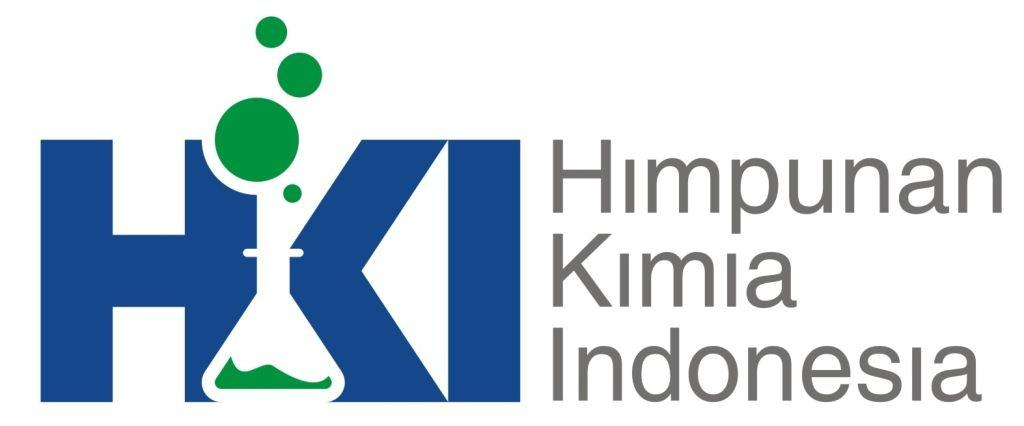Antibacterial Activity of Sugarcane Bagasse Nanocellulose Biocomposite with Chitosan Against Escherichia coli
Abstract
Keywords
References
Abdul Khalil HPS, Saurabh CK, Adnan AS, Nurul Fazita MR, Syakir MI, Davoudpour Y, Rafatullah M, Abdullah CK, Haafiz MKM, Dungani R. 2016. A review on chitosan-cellulose blends and nanocellulose reinforced chitosan biocomposites: Properties and their applications. Carbohydrate Polymers. 150: 216–226. https://doi.org/10.1016/j.carbpol.2016.05.028
Amanda ER, Khoirun N, Yulianto AP. 2020. Pengembangan bioplastik antibakteri Morgonella morganii sebagai kemasan makanan. Jurnal Kimia Dan Kemasan. 42(1): 29–36.
Calcott PH. 1982. Cyclic AMP and cyclic GMP control of synthesis of constitutive enzymes in Escherichia coli. Journal of General Microbiology. 128(4): 705–712. https://doi.org/10.1099/00221287-128-4-705
Cheung RCF, Ng TB, Wong JH, Chan WY. 2015. Chitosan: An update on potential biomedical and pharmaceutical applications. In Marine Drugs. 13(8): https://doi.org/10.3390/md13085156
Chowdhury ZZ, Hamid SBA. 2016. Preparation and characterization of nanocrystalline cellulose using ultrasonication combined with a. BioResources. 11(2): 3397–3415.
Effendi DB, Rosyid NHR, Nandiyanto ABD, Mudzakir A. 2015. Review : sintesis nanoselulosa. Jurnal Integrasi Proses. 5(2): 61–74. https://doi.org/10.1371/journal.pone.0057607
George J, Sabapathi SN. 2015. Cellulose nanocrystals: Synthesis, functional properties, and applications. Nanotechnology, Science and Applications. 8: 45–54. https://doi.org/10.2147/NSA.S64386
Gunathilake TMSU, Ching YC, Chuah CH. 2017. Enhancement of curcumin bioavailability using nanocellulose reinforced chitosan hydrogel. Polymers. 9(2): 64. https://doi.org/10.3390/polym9020064
Hadi U, Kuntaman K, Qiptiyah M, Paraton H. 2013. Problem of antibiotic use and antimicrobial resistance in Indonesia: are we really making progress. Indonesian Journal of Tropical and Infectious Disease. 4(4): 5. https://doi.org/10.20473/ijtid.v4i4.222
Hänninen A, Sarlin E, Lyyra I, Salpavaara T, Kellomäki M, Tuukkanen S. 2018. Nanocellulose and chitosan based films as low cost, green piezoelectric materials. Carbohydrate Polymers. 202(September): 418–424. https://doi.org/10.1016/j.carbpol.2018.09.001
Kim SH, Schneider BL, Reitzer L. 2010. Genetics and regulation of the major enzymes of alanine synthesis in Escherichia coli. Journal of Bacteriology. 192(20): 5304–5311. https://doi.org/10.1128/JB.00738-10
Kirani PD, Semadi AN, Wayan GI. 2014. Inhibition activity of essential oil of lemongrass leaves (Cymbopogon citratus) on the growth of Escherichia coli, Staphylococcus aureus, and Vibrio cholerae. Jurnal Rekayasa Dan Manajemen Agroindustri. 2(1): 29–38.
Li J, Wei X, Wang Q, Chen J, Chang G, Kong L, Su J. 2012. Homogeneous isolation of nanocellulose from sugarcane bagasse by high pressure homogenization. Carbohydrate Polymers. 90(4): 1609–1613. https://doi.org/10.1016/j.carbpol.2012.07.038
Li, Juanjuan, Cha, R., Mou, K., Zhao, X., Long, K., Luo, H., Zhou, F., & Jiang, X. (2018). Nanocellulose-Based Antibacterial Materials. Advanced Healthcare Materials, 7(20), 1–16. https://doi.org/10.1002/adhm.201800334
Mandal A, Chakrabarty D. 2011. Isolation of nanocellulose from waste sugarcane bagasse (SCB ) and its characterization. Carbohydrate Polymers. 86(3): 1291–1299. https://doi.org/10.1016/j.carbpol.2011.06.030
Nieß A, Siemann-Herzberg M, Takors R. 2019. Protein production in Escherichia coli is guided by the trade-off between intracellular substrate availability and energy cost 06 biological sciences 0601 biochemistry and cell biology. Microbial Cell Factories. 18(1): 1–10. https://doi.org/10.1186/s12934-019-1057-5
Oksman K, Aitomäki Y, Mathew AP, Siqueira G, Zhou Q, Butylina S, Tanpichai S, Zhou X, Hooshmand S. 2016. Review of the recent developments in cellulose nanocomposite processing. Composites Part A: Applied Science and Manufacturing. 83: 2–18. https://doi.org/10.1016/j.compositesa.2015.10.041
Phanthong P, Reubroycharoen P, Hao X, Xu G, Abudula A, Guan G. 2018. Nanocellulose: extraction and application. Carbon Resources Conversion. 1(1): 32–43. https://doi.org/10.1016/j.crcon.2018.05.004
Rahmi AYUF. 2017. Adsorpsi protein oleh nanoselulosa berbasis ampas tebu ( bagasse ) dengan metode hidrolisis asam. Jember(ID): Jursan Kimia Fakultas Matematika dan Ilmu pengetahuan Alam Universitas Jember.
Ribeiro RSA, Pohlmann BC, Calado V, Bojorge N, Pereira N. 2019. Production of nanocellulose by enzymatic hydrolysis: Trends and challenges. Engineering in Life Sciences. 19(4): 279–291. https://doi.org/10.1002/elsc.201800158
Rosli NA, Ahmad I, Abdullah I. 2013. Isolation and characterization of cellulose nanocrystals from agave angustifolia fibre. BioResources. 8(2): 1893–1908. https://doi.org/10.15376/biores.8.2.1893-1908
Saputri LH, Sukmawan R, Santoso H, Rochardjo B. 2018. Isolasi Nano Selulosa dari Ampas Tebu dengan Proses Blending pada Berbagai Variasi Konsentrasi. April, 1–6.
Shahi N, Min B, Sapkota B, Rangari VK. 2020. Eco-friendly cellulose nanofiber extraction from sugarcane bagasse and film fabrication. Sustainability (Switzerland). 12(15): 1–15. https://doi.org/10.3390/su12156015
Sheltami RM, Abdullah I, Ahmad I, Dufresne A, Kargarzadeh H. 2012. Extraction of cellulose nanocrystals from mengkuang leaves (Pandanus tectorius). Carbohydrate Polymers. 88(2): 772–779. https://doi.org/10.1016/j.carbpol.2012.01.062
Subramanian K, Senthil KP, Jeyapal P, Venkatesh N. 2005. Characterization of ligno-cellulosic seed fibre from Wrightia Tinctoria plant for textile applications-an exploratory investigation. European Polymer Journal. 41(4): 853–861. https://doi.org/10.1016/j.eurpolymj.2004.10.037
Szymańska-Chargot M, Chylińska M, Pertile G, Pieczywek PM, Cieślak KJ, Zdunek A, Frąc M. 2019. Influence of chitosan addition on the mechanical and antibacterial properties of carrot cellulose nanofibre film. Cellulose. 26(18): 9613–9629. https://doi.org/10.1007/s10570-019-02755-9
Wulandari WT, Rochliadi A, Arcana IM. 2016. Nanocellulose prepared by acid hydrolysis of isolated cellulose from sugarcane bagasse. IOP Conference Series: Materials Science and Engineering. 107(1). https://doi.org/10.1088/1757-899X/107/1/012045
Xu Q, Ji Y, Sun Q, Fu Y, Xu Y, Jin L. 2019. Fabrication of cellulose nanocrystal/chitosan hydrogel for controlled drug release. Nanomaterials. 9(2).https://doi.org/10.3390/nano9020253
DOI: 10.15408/jkv.v7i1.18718
Refbacks
- There are currently no refbacks.
Copyright (c) 2021 A'yunil Hisbiyah

This work is licensed under a Creative Commons Attribution-ShareAlike 4.0 International License.

